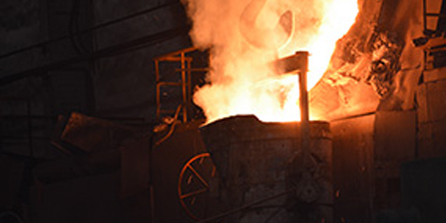Nov . 12, 2024 01:18 Back to list
heavy duty submersible slurry pump
Understanding Heavy Duty Submersible Slurry Pumps
Heavy duty submersible slurry pumps are essential engineering components used across various industries, particularly in mining, construction, and wastewater management. These pumps are designed to operate submerged in the fluid they are pumping, which means they can efficiently handle the transportation of abrasive materials, including slurries that contain solid particles and liquids.
Key Features
One of the standout features of heavy duty submersible slurry pumps is their robust construction, designed to withstand the harsh conditions often encountered in industrial environments. Made from high-quality materials such as stainless steel or abrasion-resistant alloys, these pumps offer durability and long service life, even when handling the most challenging slurries. The impellers are typically designed with high clearance to effectively manage sludgy mixtures without clogging, which is a common issue with less robust pumps.
Another key characteristic is the pump's ability to operate at various depths. Submersible pumps are often deployed in deep pits or reservoirs where traditional pumps might struggle due to height constraints or suction limitations. This capability allows for more versatile applications in mine dewatering, dredging, and slurry transfer operations.
Applications
Heavy duty submersible slurry pumps are widely used in several applications. In the mining industry, they play a crucial role in dewatering operations by removing groundwater from mining sites, thus preventing flooding and allowing for safe excavation. The pumps handle materials such as gravel, sand, and other solid waste products generated during mining activities. The efficient handling of these materials is vital to ensuring continuous operational flow and minimizing downtime.
heavy duty submersible slurry pump

In the construction sector, these pumps are commonly used for transporting concrete and other slurry mixtures. Their ability to handle high solids content makes them ideal for pumping viscous liquids used in piling and other foundational works. Moreover, they are critical for managing wastewater and sludge in treatment plants, where they facilitate the movement of thick and often abrasive liquids.
Advantages
The advantages of heavy duty submersible slurry pumps are numerous. Firstly, their submerged operation reduces the risk of cavitation and ensures high efficiency in fluid transfer. Unlike surface pumps, which rely on sucking the fluid into the pump, submersible pumps push the fluid up, which significantly improves reliability and minimizes maintenance challenges.
Additionally, these pumps are designed to run continuously for extended periods, making them incredibly cost-effective. Their ability to handle both heavy solids and high volumes of liquids simultaneously reduces the need for multiple types of pumps, ultimately saving enterprises both space and capital costs.
Furthermore, advancements in technology have resulted in the development of pumps with smart features, such as automatic monitoring systems and remote control capabilities. These modern pumps enable operators to control and monitor pump performance from a distance, providing a greater level of operational efficiency and safety.
Conclusion
In conclusion, heavy duty submersible slurry pumps are indispensable in industrial applications that require reliable, efficient movement of slurries and other abrasive materials. Their robust design, versatility, and cost-effectiveness make them a preferred choice in heavy-duty environments, from mining to construction and wastewater management. As industries continue to evolve, the need for more advanced and efficient pumping systems will only grow, ensuring that heavy duty submersible slurry pumps remain at the forefront of fluid transfer technology. By investing in these pumps, businesses can enhance their operational efficiency while ensuring a safer workplace environment.
-
Top Submersible Pump Companies High Quality Manufacturers & Suppliers in China
NewsJul.08,2025
-
High Quality Seal for 5 Inch Dredge Pump Reliable China Manufacturer & Supplier
NewsJul.08,2025
-
High-Efficiency Slurry Sand Pump from Leading China Manufacturer – Durable & Reliable Solutions
NewsJul.07,2025
-
High-Quality Slurry Pump Made in China Durable Steel Mill Slurry Pump & Parts
NewsJul.07,2025
-
High Quality Excavator Dredge Pump Manufacturer & Suppliers from China – Reliable, Durable, Efficient Solutions
NewsJul.07,2025
-
Wholesale Slurry Pump Closed Impeller Supplier High Efficiency China Slurry Pump Closed Impeller
NewsJul.06,2025
